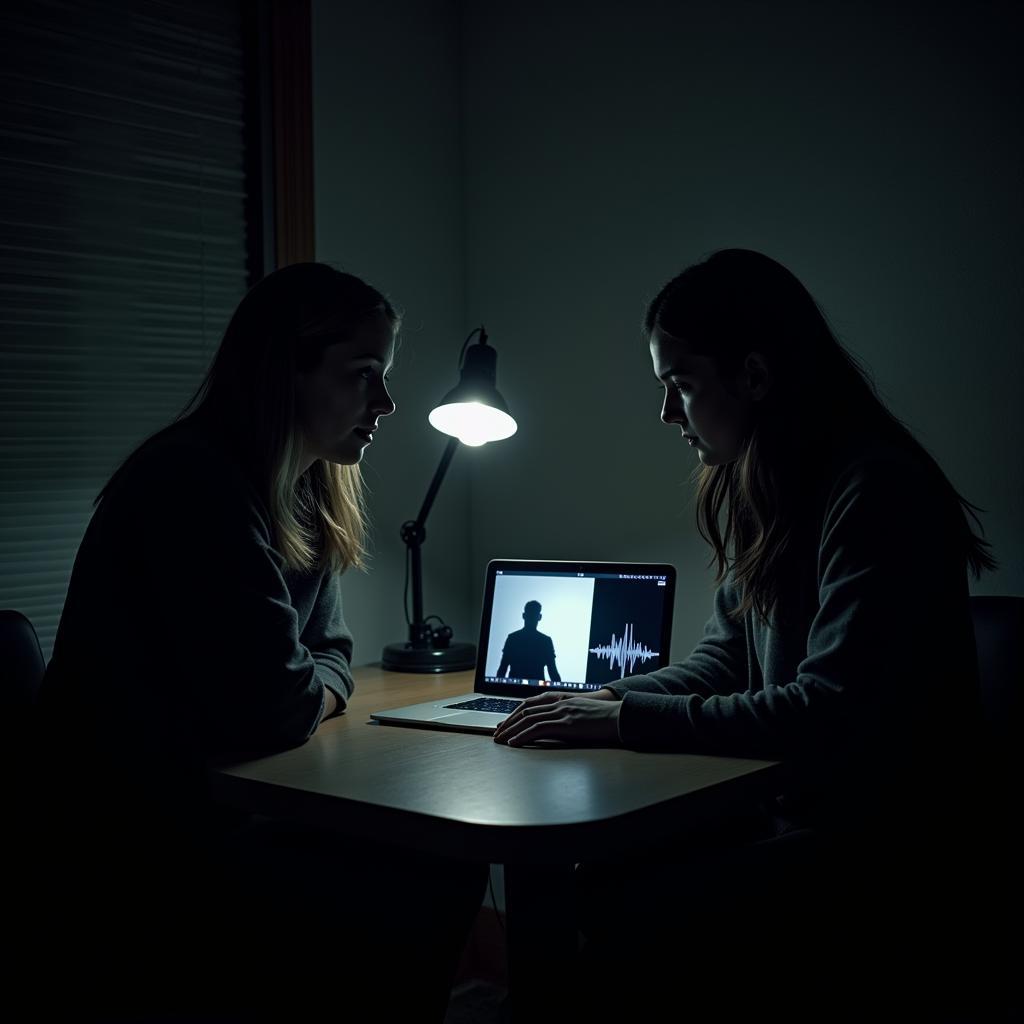Paranormal investigation often feels like piecing together a puzzle shrouded in shadow. We search for clues in the echoes of forgotten events, seeking patterns and connections that might illuminate the unknown. This is where Event-driven Research takes center stage. By meticulously analyzing specific occurrences, we aim to pull back the curtain and expose the forces at play in the paranormal realm.
What is Event-Driven Research?
Event-driven research, in the context of paranormal investigation, focuses on meticulously collecting data surrounding specific paranormal events. This approach goes beyond simply observing phenomena; it delves into the historical context, environmental factors, and personal experiences associated with an event to uncover potential triggers, patterns, and explanations.
Think of it as detective work for the supernatural. Just as a detective gathers evidence and testimonies to reconstruct a crime, we, as paranormal researchers, use event-driven research to shed light on the perplexing world of unexplained occurrences.
The Importance of a Time-Sensitive Approach
One of the crucial elements of event-driven research is its time-sensitive nature. The sooner we can investigate an event after it occurs, the better our chances of capturing valuable data. This is because:
- Witness memory is freshest: The details of the event are still vivid in the minds of those who experienced it, making their testimonies more accurate and reliable.
- Residual energy might linger: Some believe that paranormal energy can leave an imprint on the environment. By investigating quickly, we might be able to detect remnants of this energy.
- Environmental factors are less likely to be compromised: External influences like weather or human interference can alter the scene of a paranormal event over time.
Key Steps in Event-Driven Research
Event-driven research follows a structured approach to ensure we gather the most comprehensive data possible. Here’s a glimpse into our process:
- Initial Report & Assessment: We carefully analyze incoming reports of paranormal activity. This involves gathering details about the event, the location, and the individuals involved.
- Witness Interviews: We conduct in-depth interviews with witnesses to gather firsthand accounts of the experience.
- On-Site Investigation: We visit the location of the event to document the environment, collect physical evidence (if any), and conduct various experiments using specialized equipment.
- Historical Research: We delve into the history of the location and the people associated with it, searching for any past events or occurrences that might be relevant.
- Data Analysis: We meticulously examine all collected data, looking for correlations, patterns, or anomalies that might offer insights into the nature of the event.
The Benefits of Event-Driven Research
By focusing on specific events, we can:
- Identify Patterns: Over time, analyzing multiple events might reveal recurring elements, environmental factors, or even specific dates or times that appear significant.
- Refine Investigation Techniques: Each investigation provides valuable experience and allows us to refine our methods and approaches for future research.
- Potentially Validate or Debunk Claims: Thorough investigation can sometimes provide evidence to support a paranormal claim, or conversely, it might uncover logical explanations that debunk the experience.
Event-Driven Research: A Quest for Understanding
Paranormal Research, by its very nature, grapples with the unknown. Event-driven research offers us a framework – a way to approach the mysteries of the paranormal with a critical, investigative lens. While we may not always find definitive answers, each investigation brings us one step closer to understanding the intricate tapestry of the unseen world.
Frequently Asked Questions about Event-Driven Research
1. What kind of events are suitable for event-driven research?
Any event that suggests paranormal activity, such as apparitions, unexplained noises, object movements, or sudden changes in temperature, can be investigated using this approach.
2. How long after an event can you still conduct event-driven research?
Ideally, investigations are most effective in the immediate aftermath of an event. However, valuable insights can still be gleaned even years later, depending on the nature of the event and the availability of historical data.
3. What if I don’t have any specialized equipment for paranormal investigation?
While specialized equipment can be helpful, it’s not strictly necessary. Detailed observation, meticulous documentation, and thorough interviews are fundamental to event-driven research.
4. Can event-driven research be applied to historical paranormal events?
Absolutely! Historical events can provide a wealth of data for analysis. This often involves examining historical records, interviewing individuals familiar with local lore, and investigating sites associated with the events.
5. Is event-driven research always successful in explaining paranormal activity?
Not always. The nature of paranormal phenomena makes it difficult to find definitive answers. However, event-driven research provides a structured and insightful way to explore these events, even if definitive conclusions remain elusive.
 Paranormal investigators analyzing audio recordings and photographic evidence
Paranormal investigators analyzing audio recordings and photographic evidence
Seeking Answers in the Echoes of Events
If you have experienced a paranormal event, sharing your story can be an invaluable contribution to our understanding of the unknown. Your experiences, combined with our event-driven approach, could be the key to unlocking more secrets of the paranormal world.
For support or to share your experience, contact us at:
Phone: 0904826292
Email: research@gmail.com
Address: No. 31, Alley 142/7, P. Phú Viên, Bồ Đề, Long Biên, Hà Nội, Việt Nam.
Our dedicated team is available 24/7 to assist you.